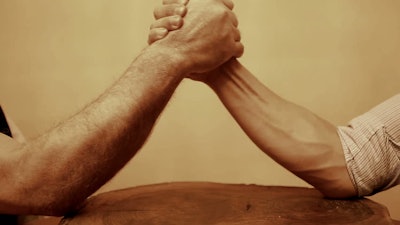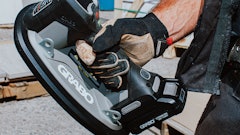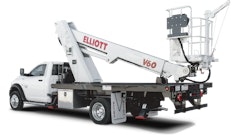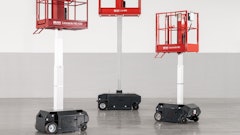
Part 3 in a series by Sue Dyer of OrgMetrics...
A growing trend in business is co-opetition. Co-opetition is a buzzword coined to describe cooperative competition (several people take credit for creating the word). Cartels and trade associations are well known examples where companies work together despite the fact that they are fierce competitors.
Examples are everywhere. Basically, you work in “partnership” with another company to enhance both of your businesses and to create a competitive advantage. I’ve been calling this “STRATEGIC PARTNERING” for over 20 years.
Equipment rental companies have been working this way since day one. We know that you must cooperate in order to succeed, but I’ve come to realize that most people, teams and organizations settle for a very low level of cooperation when they develop strategic partnerships. They could, however, significantly improve their results by pushing the envelope of what’s possible. Come along with me and see how this works.
How to Build a Foundation for Partnership at Your Rental Business
7 Root Causes to Poor Communication at Your Business
How to Become a Trusted Leader | ForConstructionPros.com
Four Steps to Solving Your Problem
How about arm wrestling with me? The objective is to get as many points as possible. Here are the rules – one point is scored for each touch to the table, no talking allowed, we have 20 seconds. On your marks, get set, go! Wow, you are tough. I couldn’t budge your arm. I’m sure glad you weren’t able to get any point by pinning my arm either.
Over the hundreds of times I’ve done this exercise with teams, most pairs don’t get any points, just as we didn’t, but the highest any pair has scored is 200 points. How can there be such a huge difference? What was our objective – to get as many points as possible. In order to maximize the number of points we would need to cooperate (as the high scorers did).
Well then, why doesn’t everyone just do that? Because we all know how to arm wrestle. And when we arm wrestle we are adversaries. We are supposed to try to win, or at least not lose. Because we see ourselves as adversaries we fail to see what might be possible.
Level One – Cooperation: Here you realize that you can optimize the number of points you can get by cooperating. You begin to cooperate. It is one point for me and one point for you. Alternating back and forth to make sure the points are evenly distributed.
Level Two - Collaboration: You have a breakthrough and realize that if you touch just your arm (or just your partner's arm) you can make even more points. So we begin to collaborate. We move our arms up and
down together and double the number of points we earn.
Level Three - Co-creation: This is working well, so we decide to really put our muscles into it and see how many points we can rack up. So we begin to co-create points by jointly moving our arms very rapidly up and down (just barely off the table each time). We quadruple the number of points that we earn.
Pushing cooperation to the next level
The three levels of cooperation are available to all teams. Here are five tips for pushing cooperation to the next level.
Tip #1: Clarify roles and responsibilities - You must be very clear on what you are trying to achieve by working together. And you must be very clear on the role and responsibilities that each party has for contributing to the
achievement of those objectives. Partnerships break down when expectations become misaligned or when either party doesn’t know what to expect. When you are really acting like a team, the lines between organizations become difficult to see.
Tip 2: Commit being fair - The foundation of trust in a partnership is a commitment to fairness. If you know that no matter what issues pop up you will always be fair with one another, then TRUST will exist and grow. It is when one side feels something “unfair” has happened that causes trust to erode. So, high-trust relationships are built on looking for the “fair” solution to each issue. When all team members have confidence that they will be treated fairly, there is nothing they can not explore.
Tip #3: Get off your 'buts' - Judgements impair our ability to communicate. They often sound like “Yes, but that’s not what I want," or, “Yes, but that will never work!” When you hear “yes, but” in your head you have stopped listening. Worse yet, you are going to be working on your "rebuttal." So in an instant, in your head, you’ve just become an adversary. Instead of judging, listen to understand where the person is coming from and what they need.
Tip #4: Create account-ability - It is important to see whether or not the parties feel the strategy is working. It is very important to make sure that the partners have the ability to tell each other the truth, in a manner that does not damage relationships. A monthly scorecard can offer anonymous feedback allowing the team members to see where they stand with each other and on the objectives.
Tip #5: Plan for disagreements - Nothing happens exactly as we plan. There will be disagreements along the way. What is important is how the team deals with the disagreements. Do you work together to find new ways of doing things? Or, do you damage relationships so that you no longer want to work together? By creating a conflict resolution process BEFORE you have any conflicts your team members will know what to do when the inevitable conflict
breaks out.
Knowing that there are three levels of cooperation, I hope that you challenge your project team to reach new levels. In a strategic partnership there is no activity that can provide you with a better return on your investment. Try talking with your team about the three levels of cooperation and working to get a commitment to move to the next level on your next project.





















